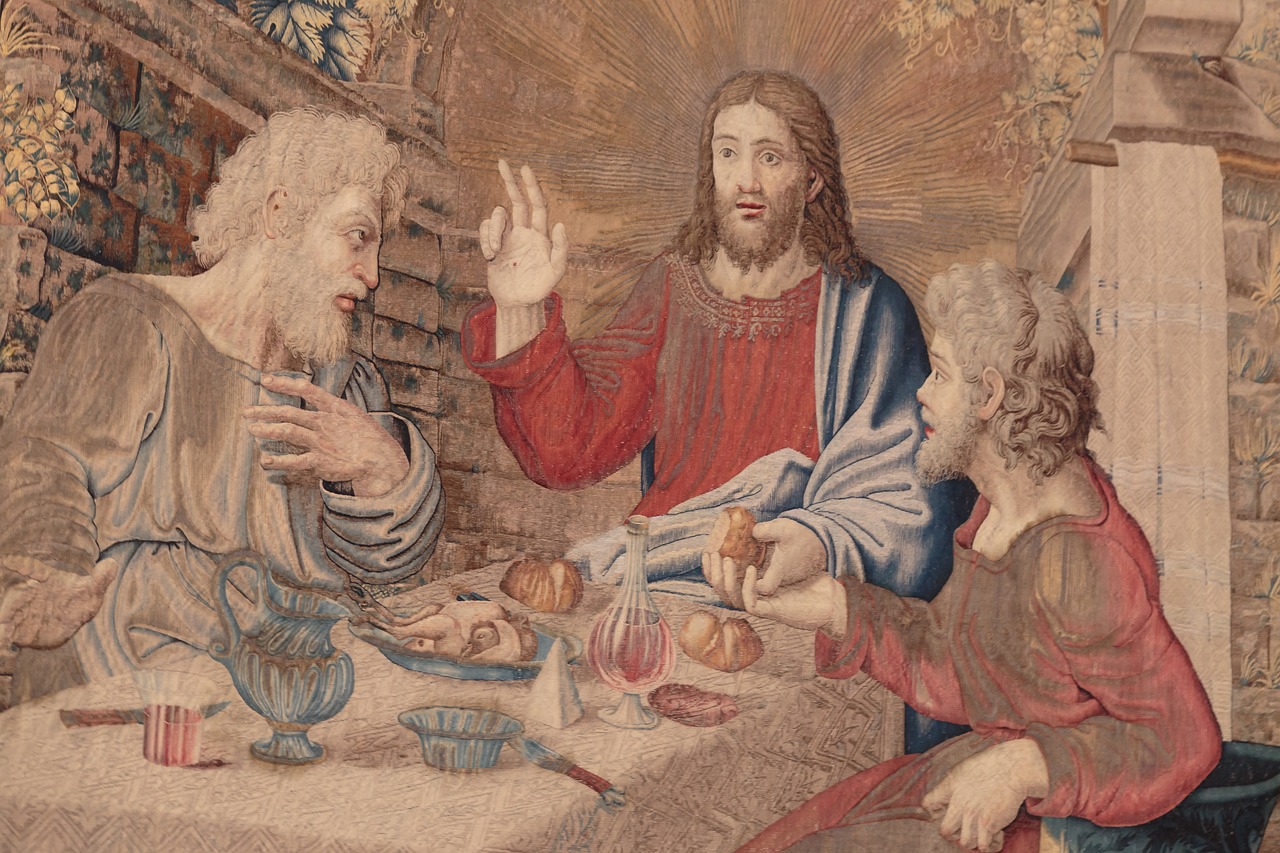Sometimes, things just don’t go the way we would like. Maybe we can even see it coming from a mile away, but that doesn’t make it any less disappointing, disheartening, or full of sorrow. We lose loved ones, get laid off from work, suffer a miscarriage, or any number of sorrows.
In these moments of loss and emptiness, Mary comes alongside us. She knows what it is like to lose. In today’s Gospel, Mary has literally given everything. All of her life is a gift to God’s Will, and she is a beautiful example of participating in God’s Will. Part of God’s Will for her life was to give her a Son, the most precious Son, Jesus. As He grew, she recognized that He would need to go beyond her four walls, that she would have to share Him with others. But, she could still call Him her Son. I do not mean to imply that Mary was selfish in any way. The fact is they shared a familial reality that Jesus did not share with anyone else, no matter how close they were to Him.
At the foot of the Cross, Jesus asks His mother to sacrifice even this. She had lost everything, her Son was dying before her and all she had left was her motherhood to Him. In that moment, Jesus lovingly gazes upon her and tells her that even her motherhood is needed. Mary, desolate, has to let go of her Son, her ultimate good. Yet, in the midst of this desolation, Jesus is not outdone in generosity. He asks Mary to sacrifice her motherhood, and He then returns her motherhood back to her tenfold by giving her the Church, the Body of Christ, as her child.
When we experience loss, we are presented with many difficulties. It can be so challenging to consider God’s wider plans for our lives, the lives of those around us, and for the whole world. Understanding is not always within our grasp. In these moments, Mary, our dear Mother, is waiting to hold our hand at the foot of this cross. She holds us close, pointing us to her Son and the love He shares in the midst of His pain. Pain, loss, emptiness: we can, as Mary did, offer even these to Jesus. What He returns to us may not be what we expect, but it will be for our good.
A veces, las cosas simplemente no salen como nos gustaría. Tal vez incluso podamos verlo venir desde una milla de distancia, pero eso no lo hace menos decepcionante, desalentador o lleno de tristeza. Perdemos a seres queridos, nos despiden del trabajo, sufrimos un aborto espontáneo o cualquier cantidad de tristezas.
En estos momentos de pérdida y vacío, María viene a nuestro lado. Ella sabe lo que es perder. En el evangelio de hoy, María lo ha dado literalmente todo. Toda su vida es un regalo a la Voluntad de Dios y ella es un hermoso ejemplo de participación en la Voluntad de Dios. Parte de la Voluntad de Dios para su vida era darle un Hijo, el Hijo más precioso, Jesús. A medida que crecía, ella reconoció que Él tendría que ir más allá de sus cuatro paredes, que tendría que compartirlo con los demás. Pero ella todavía podía llamarlo su Hijo. No quiero dar a entender que María fuera egoísta de ninguna manera. El hecho es que Él y ella compartían una realidad familiar que Jesús no compartía con nadie más, sin importar cuán cercanos estuvieran de Él.
Al pie de la Cruz, Jesús pide a su madre que sacrifique incluso esto. Lo había perdido todo, su Hijo se estaba muriendo ante sus ojos y lo único que le quedaba era su maternidad. En ese momento, Jesús la mira con amor y le dice que también necesita su maternidad. María, desolada, tiene que dejar ir a su Hijo, su bien supremo. Sin embargo, en medio de esta desolación, Jesús no se queda atrás en generosidad. Le pide a María que sacrifique su maternidad, y luego le devuelve su maternidad multiplicada por diez, entregándole la Iglesia, el Cuerpo de Cristo, como su hijo.
Cuando experimentamos una pérdida, se nos presentan muchas dificultades. Puede ser muy desafiante considerar los planes más amplios de Dios para nuestras vidas, las vidas de quienes nos rodean y para el mundo entero. La comprensión no siempre está a nuestro alcance. En estos momentos, María, nuestra querida Madre, espera tomar nuestra mano al pie de esta cruz. Ella nos abraza, señalándonos hacia su Hijo y el amor que Él comparte en medio de Su dolor. Dolor, pérdida, vacío: podemos, como lo hizo María, ofrecer incluso esto a Jesús. Puede ser que lo que Él nos devuelva no sea lo que esperamos, pero será para nuestro bien.
 Kate Taliaferro is an Air Force wife and mother. She is blessed to be able to homeschool, bake bread and fold endless piles of laundry. When not planning a school day, writing a blog post or cooking pasta, Kate can be found curled up with a book or working with some kind of fiber craft. Kate blogs at DailyGraces.net.
Kate Taliaferro is an Air Force wife and mother. She is blessed to be able to homeschool, bake bread and fold endless piles of laundry. When not planning a school day, writing a blog post or cooking pasta, Kate can be found curled up with a book or working with some kind of fiber craft. Kate blogs at DailyGraces.net.
Feature Image Credit: Mateus Campos Felipe, unsplash.com/photos/religious-painting-E9OVvWeHH5o


 David Dashiell is a freelance author and editor in Nashville, Tennessee. He has a master’s degree in theology from Franciscan University, and is the editor of the anthology
David Dashiell is a freelance author and editor in Nashville, Tennessee. He has a master’s degree in theology from Franciscan University, and is the editor of the anthology 







 Allison Gingras (
Allison Gingras ( 
 Tami Urcia grew up in Western Michigan, a middle child in a large Catholic family. She spent early young adulthood as a missionary in Mexico, studying theology and philosophy, then worked and traveled extensively before finishing her Bachelor’s Degree in Western Kentucky. She loves tackling projects, finding fun ways to keep her little ones occupied, quiet conversation with the hubby and finding unique ways to love. She works full time, is a guest blogger on
Tami Urcia grew up in Western Michigan, a middle child in a large Catholic family. She spent early young adulthood as a missionary in Mexico, studying theology and philosophy, then worked and traveled extensively before finishing her Bachelor’s Degree in Western Kentucky. She loves tackling projects, finding fun ways to keep her little ones occupied, quiet conversation with the hubby and finding unique ways to love. She works full time, is a guest blogger on 
 Merridith Frediani loves words and is delighted by good sentences. She also loves Lake Michigan, dahlias, the first sip of hot coffee in the morning, millennials, and playing Sheepshead with her husband and three kids. She writes for Catholic Mom, Diocesan.com, and her local Catholic Herald. Her first book Draw Close to Jesus: A Woman’s Guide to Adoration is available at Our Sunday Visitor and Amazon. You can learn more at
Merridith Frediani loves words and is delighted by good sentences. She also loves Lake Michigan, dahlias, the first sip of hot coffee in the morning, millennials, and playing Sheepshead with her husband and three kids. She writes for Catholic Mom, Diocesan.com, and her local Catholic Herald. Her first book Draw Close to Jesus: A Woman’s Guide to Adoration is available at Our Sunday Visitor and Amazon. You can learn more at 
 Elizabeth Tomlin is the author of Joyful Momentum: Building and Sustaining Vibrant Women’s Groups and contributing author to the Ave Prayer Book for Catholic Mothers. She is General Counsel for the Archdiocese for the Military Services, USA. Elizabeth is an Army wife and mother of three and currently lives in the DC area. She blogs at
Elizabeth Tomlin is the author of Joyful Momentum: Building and Sustaining Vibrant Women’s Groups and contributing author to the Ave Prayer Book for Catholic Mothers. She is General Counsel for the Archdiocese for the Military Services, USA. Elizabeth is an Army wife and mother of three and currently lives in the DC area. She blogs at 
 Dr. Alexis Dallara-Marsh is a board-certified neurologist who practices in Bergen County, NJ. She is a wife to her best friend, Akeem, and a mother of two little ones on Earth and two others in heaven above.
Dr. Alexis Dallara-Marsh is a board-certified neurologist who practices in Bergen County, NJ. She is a wife to her best friend, Akeem, and a mother of two little ones on Earth and two others in heaven above.

